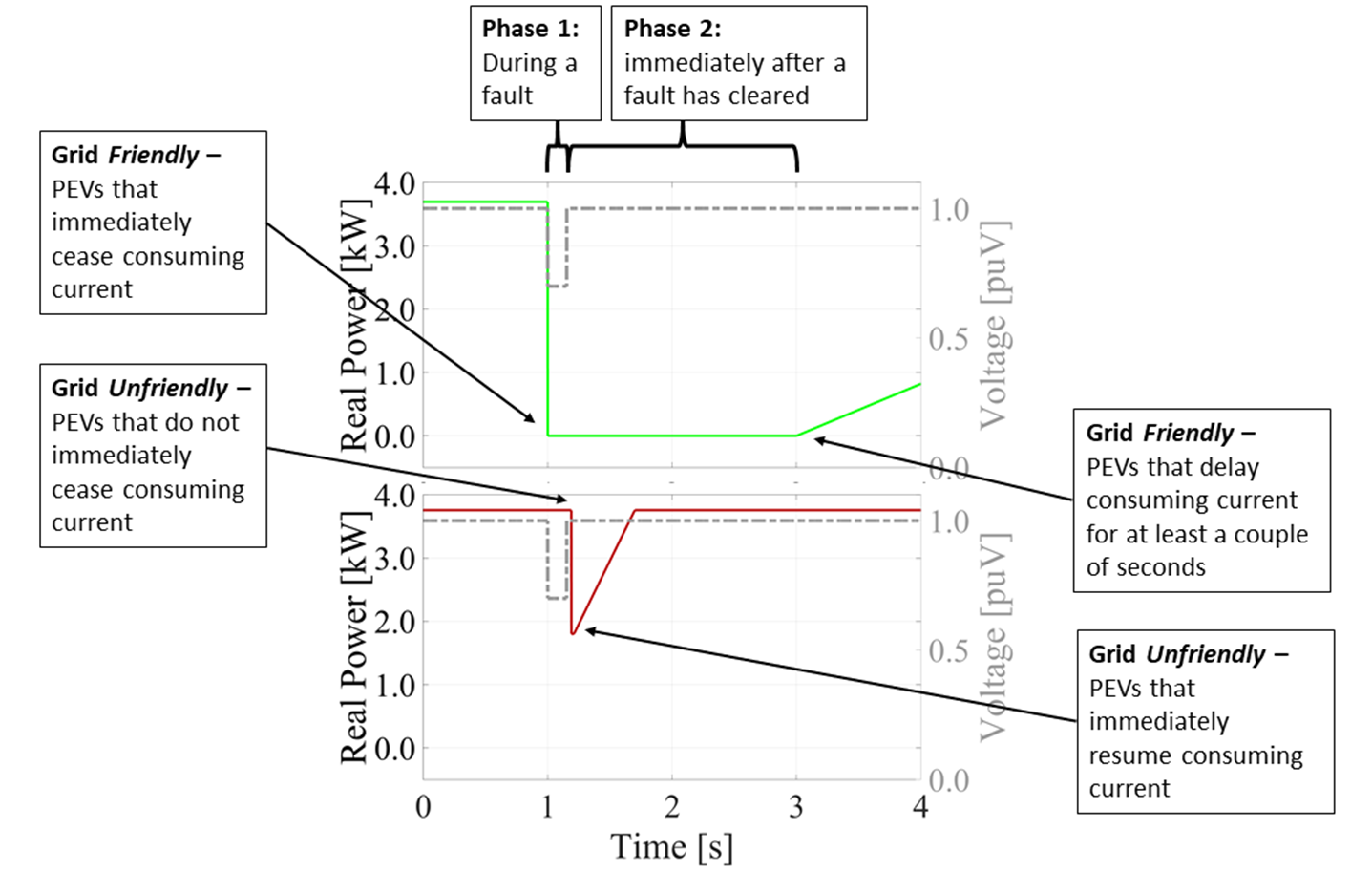Transmission Grid Friendly Plug-in Electric Vehicle Charging
Transmission Grid Friendly Plug-in Electric Vehicle Charging
Exploring the reliability impacts of a wide scale adoption of plug-in electric vehicles on the transmission system
Background and Motivation
Plug-in electric vehicles (PEVs) represent a rapidly growing new type of load that transmission (and distribution) systems must be prepared to serve. Whether transmission system planners find the behavior of PEVs to be grid friendly or grid unfriendly will have direct implications for future transmission investments and operating procedures.

The research team found that when they are charging PEVs can be programmed to behave during voltage dips caused by transmission faults in a way that is both friendly to the grid and causes no significant inconvenience to the operation of the vehicles. Recommended voltage thresholds and timings for such grid friendly behaviors were then identified.
Objective
This work is intended to inform transmission system planners of the potential implications, positive and negative, of enhanced transportation modernization, and also manufacturers of PEVs of charging behaviors that are grid friendly and grid unfriendly.
Recent Publications
Team Members
- Frank Tuffner, Pacific Northwest National Laboratory
- John Undrill, Arizona State University
- Don Scoffield, Idaho National Laboratory
- Dmitry Kosterev, Bonneville Power Administration
- Ryan Quint, North American Electric Reliability Corporation